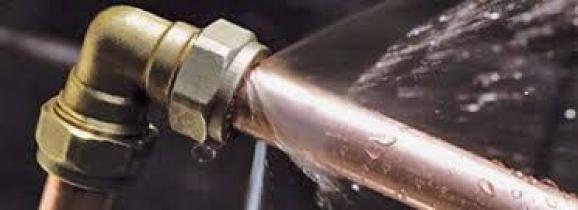Every person seems to have their private perception about How to detect water leaks in your home.

Leakages not only cause waste of water however can likewise cause unnecessary damages to your house and also advertise undesirable natural growth. Water leakages might go undetected given that most of the pipework in our home is concealed. By recognizing as well as looking for everyday scenarios that trigger leakages, you can secure your residence from future leaks and also unnecessary damage. Today, we will certainly take a look at six leakage causes that may be triggering your pipelines to leak.
Immediate temperature level modifications.
Extreme temperature level changes in our pipelines can cause them to broaden and acquire unexpectedly. This development and tightening might create cracks in the pipelines, specifically if the temperature are below freezing.
Corroded water systems
As time goes by, your plumbing system ages as well as corrosion such as corrosion might begin eating away the pipes. This could be the cause of discoloration or warping on your water pipes. This requires an assessment with your plumber immediately. Think about replacing the pipelines considering that they are at a greater risk of corrosion than the more recent designs if our plumbing system is old.
Faulty Pipeline Joints
The point at which your pipelines connect is often the weakest link in the waterline. Pipe joints can wear away in time, causing water leaks. Unfortunately, most of pipeline joints are not quickly visible. If you have loud pipes that make ticking or banging noises, specifically when the warm water is switched on, your pipe joints are possibly under a lot of stress. It is recommended to have your plumber evaluate your system once a year.
Encroaching origins
The majority of water leakages start outside your house as opposed to inside it. If you discover a sudden decline in water pressure, say in your faucet, take time to head out and analyze your lawn. You could discover damp patches or sinkholes in your backyard, and that could indicate that tree roots are invading water lines triggering water to seep out. You can have your plumber look for intrusion, particularly if you have trees or shrubs near your property.
Poor Water Connectors
Sometimes, a leakage can be triggered by loose hoses as well as pipelines that provide your appliances. Generally, changing is what causes the loose water Links. You may find when it comes to a washing equipment, a hose pipe may spring a leak because of shaking during the spin cycle. In case of a water links leak, you may discover water running straight from the supply line or puddles around your home appliances.
Blocked Drains
Clogged drains pipes may be aggravating as well as inconveniencing, but they can sometimes wind up causing an overflow bring about rupture pipelines. Keep getting rid of any type of products that may drop your drains that might obstruct them to avoid such aggravations.
All the above are sources of leakages but not all water leakages arise from plumbing leaks; some leakages may come from roof leaks. All leakages ought to be fixed right away to avoid water damages.
Leaks not just cause waste of water however can additionally create unneeded damages to your home and also advertise unwanted natural development. By recognizing and also looking for everyday scenarios that trigger leaks, you can protect your residence from future leaks and unneeded damage. Today, we will certainly look at six leak creates that may be causing your pipelines to drip.
At times, a leak can be caused by loose tubes and pipelines that supply your devices. In case of a water connections leakage, you may discover water running straight from the supply line or pools around your home appliances.
How To Check For Water Leak In Your Home
How To Check for Leaks
The average household's leaks can account for nearly 10,000 gallons of water wasted every year and ten percent of homes have leaks that waste 90 gallons or more per day. Common types of leaks found in the home are worn toilet flappers, dripping faucets, and other leaking valves. These types of leaks are often easy to fix, requiring only a few tools and hardware that can pay for themselves in water savings. Fixing easily corrected household water leaks can save homeowners about 10 percent on their water bills.
To check for leaks in your home, you first need to determine whether you're wasting water and then identify the source of the leak. Here are some tips for finding leaks:
Take a look at your water usage during a colder month, such as January or February. If a family of four exceeds 12,000 gallons per month, there are serious leaks.
Check your water meter before and after a two-hour period when no water is being used. If the meter changes at all, you probably have a leak.
Identify toilet leaks by placing a drop of food coloring in the toilet tank. If any color shows up in the bowl after 10 minutes, you have a leak. (Be sure to flush immediately after the experiment to avoid staining the tank.)
Examine faucet gaskets and pipe fittings for any water on the outside of the pipe to check for surface leaks.
Undetected water leaks can happen without the home or business owner even realizing. If you suspect a water leak, but not able to find the source. It is time to contact a professional water leak detection service, The Leak Doctor.
How To Find a Water Leak In Your Home
https://www.leakdoctor.com/blog/How-To-Check-For-Water-Leak-In-Your-Home_AE197.html

Do you like reading about Top Causes of Home Water Leaks? Post a review down the page. We'd be pleased to see your views about this piece. We hope to see you back again in the near future. Those who enjoyed reading our blog posting if you please remember to pass it around. We love reading our article about How to detect water leaks in your home.
Top-notch care? Dial.